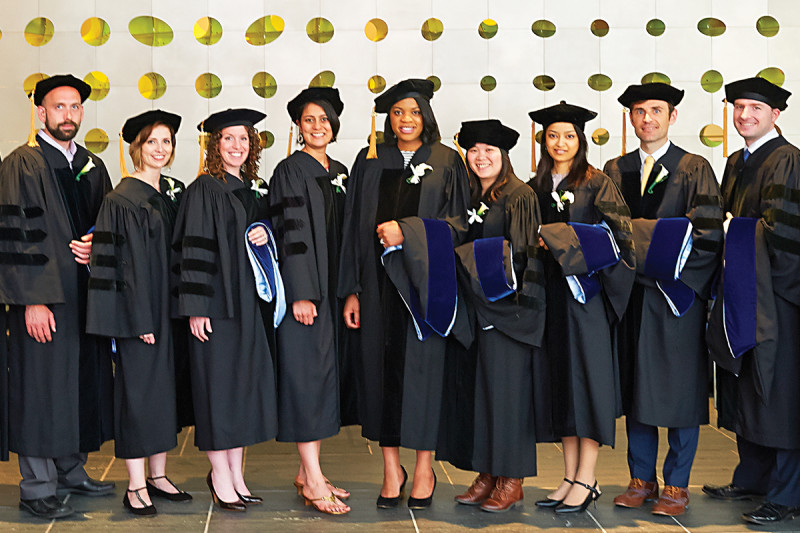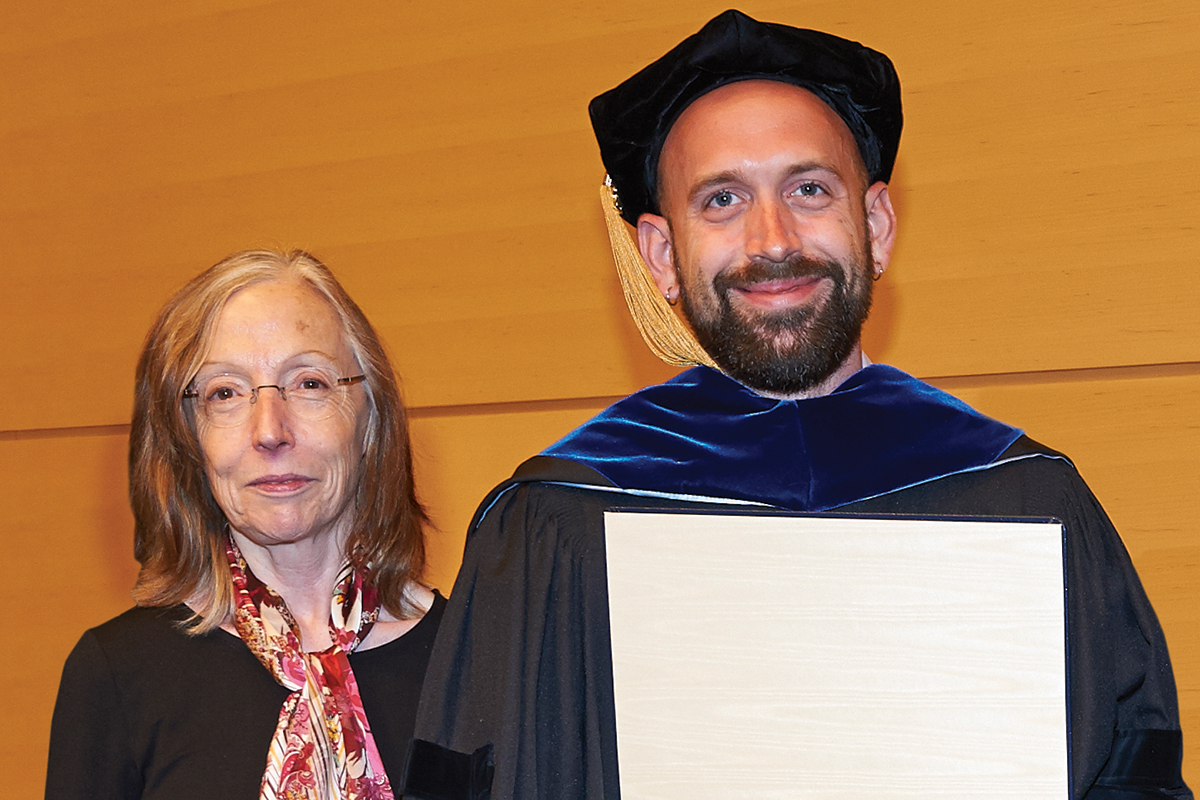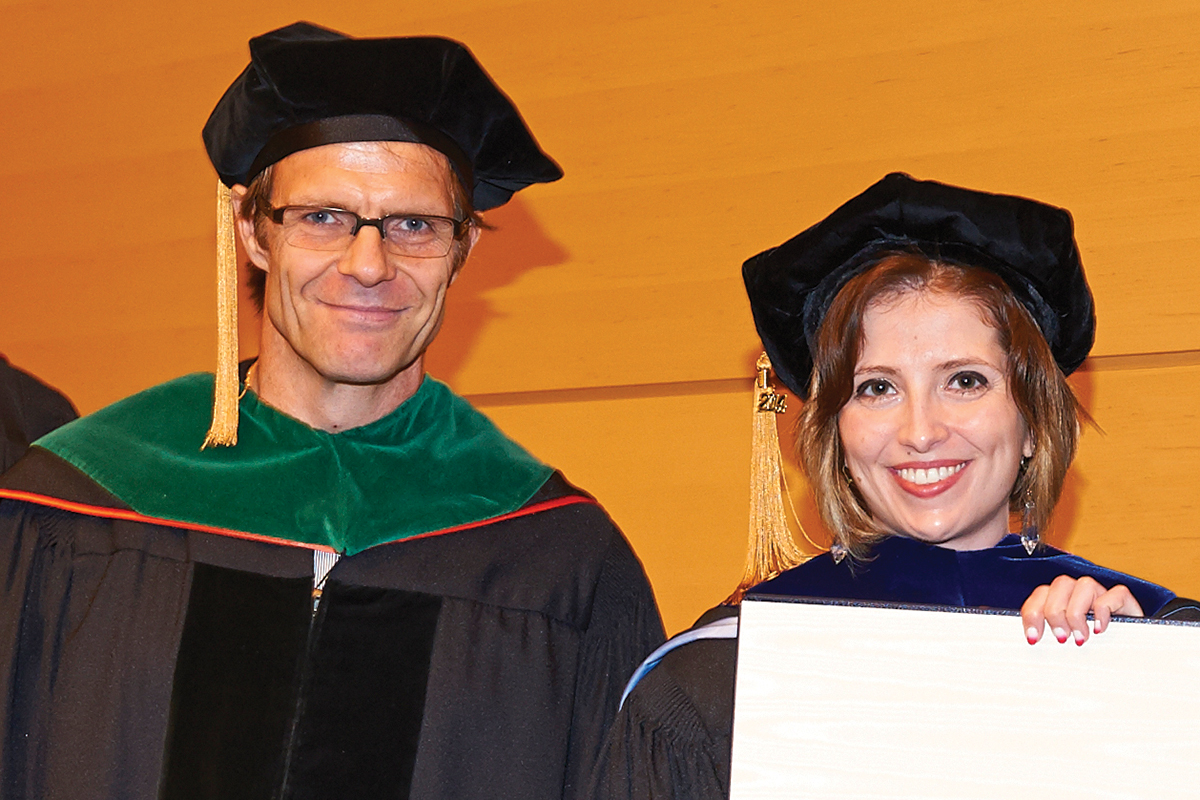
2014 Class of Louis V. Gerstner, Jr. Garduate School of Biomedical Sciences -- (From left) James Mahaffey, Justine Miller, Moriah Nissan, Neha Bhagwat, Jennifer Nnoli, Ly Vu, Sadia Rahman, William Walkowicz, and John Halliday

Physician-scientist Ross L. Levine with Neha Bhagwat
Neha is the first student to graduate from our lab, and we’re very proud of her. She fulfilled the three fundamental goals you would want for any of us in our careers. The first is to impact knowledge. She’s had a tremendous impact in our field with important discoveries that have taught us a lot about [the] JAK2 [gene] and the biology of diseases that we care deeply about. She’s impacted patients. There are already two therapies in clinical trials based on her work and there are more to come. … Most important, she’s impacted all of us by being a tremendous colleague and citizen in our lab.
– Ross Levine

Kathryn V. Anderson, Chair, Developmental Biology Program with James Mahaffey
Jamie was a member of the first Gerstner Sloan Kettering class and made the bold decision to work in a developmental biology lab. He tackled the role of WNT signaling, which is important in tumors as well as in development. He did a number of important studies using his very careful technique in the laboratory to show that, among other things, a drug that had been thought of as a treatment for WNT-based tumors might actually make these tumors worse. Jamie is going on to do cancer biology at NYU, where he’s going to figure out how to control the activity of Ras [the most commonly mutated oncogene in all human cancers].
– Kathryn Anderson

Developmental and stem cell biologist Lorenz Studer with Justine Miller
Justine was a very special student. She came to my lab with an amazing track record and with her own funding for a project. It’s a project that’s probably one of the boldest studies we’ve tried in the lab for many years, which has to do with using a technology in which we can use an induced-aging strategy to produce features that mimic the normal aging process in stem cell–derived fibroblasts and neurons. Justine’s strategy opens up the possibility of improving stem cell–based modeling of late-onset diseases. She is going to continue doing stem cell research as a postdoc, and I’m sure you’re going to hear a lot from her in the future.
– Lorenz Studer